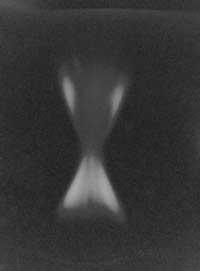Ultrasonic debugging

A team of researchers from the Purdue University of the United States has developed a method of eliminating contaminants in ultrasonic water that is optimizing its characteristics. The system base is relatively simple. When high-frequency ultrasound passes through the water, a phenomenon called sonoluminescence occurs.
There are many bubbles that form and, when they collide between them, the pressure and the temperature of the internal gas increase a lot in very little time. This modification produces a degradation of organic pollutants. The degree of degradation depends on the frequency of ultrasound, so researchers are looking for the frequency that produces the highest degree of degradation.





